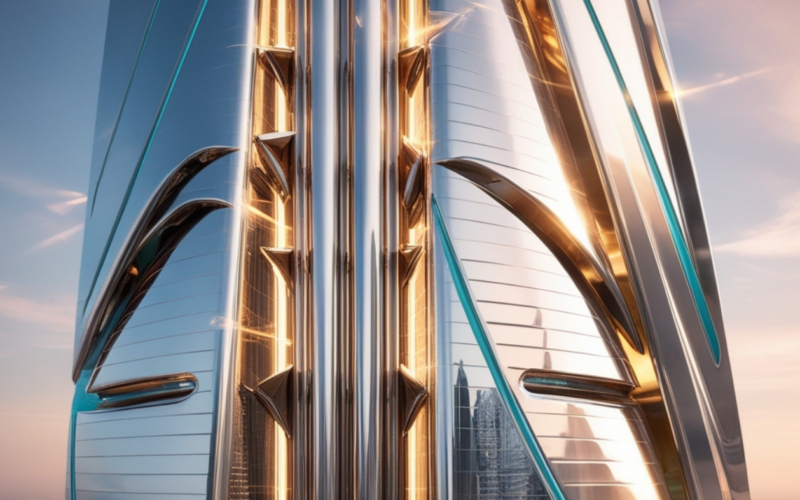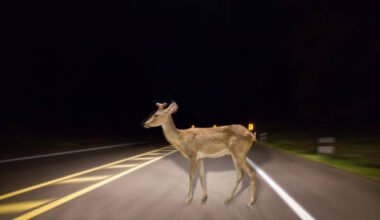Have you ever seen buildings with shiny, spinning structures on their rooftops? These aren’t just for looks; they help keep pigeons away. But how do these spinning sculptures keep birds away?
In this blog post, you will get to know why shiny spinning things on buildings are good for bird control.
Fascinating Rooftop Ornaments
Now, let’s get into how these shiny things you see on rooftops deter birds from causing harm to the buildings. Look up at the historic buildings in your city, and you might see something odd – shiny, moving things on their roofs.
These rooftop ornaments have a special job: they keep birds, especially pigeons, away. They help protect the building’s exterior from damage.
Shimmering Pyramids: A Humane Solution to Keep Birds Off
At the historic Vermont House in Burlington, you’ll find these cool pyramids. They spin and shine, making it hard for pigeons to land.
This is called the Eagle Eye system, suggested by local pest experts. It really works to keep pigeons away.
These pyramids stop pigeons from making nests, which keeps the building safe. They also stop the birds from leaving droppings that can harm the building.
This way, the building looks better and is taken care of in a kind way.
Protecting Historic Buildings from Feathered Messes
Keeping historic buildings safe from pigeons is very important. Old ways like spikes or nets don’t always work well. But, the shiny pyramids are a good choice. They look nice and are good for the birds too.
More cities and owners are using these bird-friendly ideas. The shiny ornaments make buildings look better and help the environment. They make cities nicer for people and animals alike.
Revolving Metallic Kinetic Sculptures
Buildings are topped with shiny, spinning structures that do more than just look good. These sculptures, often in shapes like pyramids, keep pigeons away. They stop pigeons from making a mess.
These sculptures use motors and wind to spin. They make it hard for pigeons to land and stay. By reflecting sunlight, they look beautiful and keep pigeons away from important buildings.
The Eagle Eye system at the Vermont House in Burlington cost about $10,000. It stopped pigeons from leaving droppings that harm the building’s stone.
These sculptures make buildings look better and protect them from pigeons. They help keep buildings safe and look good. By adding these sculptures, architects and owners find a way to be kind to birds and protect their buildings.
A Historical Perspective Of Keeping Pigeons As Pets
The urban pigeon, also known as the “rock dove,” has a rich history. They were first domesticated in ancient Mesopotamia and Egypt.
Later, their domesticated cousins, “carrier” or “messenger” pigeons, came to the United States in the 17th century.
These pigeons either escaped or were set free, forming feral populations in cities worldwide. Today, they are seen as pests, living near humans and nesting on building ledges and rooftops. This mirrors where their wild ancestors lived.
Understanding how pigeons went from being domesticated birds to urban pests helps us tackle the challenges they pose in cities.
The rock dove, or feral pigeon, is a medium-sized bird. It measures 320 to 370 mm in length and has a wingspan of about 640 to 720 mm.
These pigeons weigh between 238 to 380 grams and can live 3 to 5 years in the wild or up to 15 years in captivity.
They breed in spring and summer, with pairs laying up to 12 eggs a year. Flocks can have 50 to 500 birds and carry parasites like Columbicola columbae and Capillaria columbae.
While pigeon droppings can carry diseases, the risk of getting histoplasmosis or psittacosis is low. The chance of getting psittacosis which could be fatal is less than 1%.
The change of rock doves from domesticated birds to urban pests happened over time. They adapted well to city life, finding food and places to nest easily.
Now, pigeons are a common problem in cities, challenging city officials and residents.

Hazards of Pigeon Droppings: A Public Health Concern
Pigeons may be a bother for building owners and people walking by because of the mess they make. But, their droppings can be a big health risk.
They carry a fungus that can lead to a deadly infection in people, especially those with weak immune systems.
The droppings are acidic and can turn into crystals over time. This can harm stone buildings. At the Historic Vermont House, they had to clean the droppings off regularly.
This shows we need good ways to keep pigeons away to protect buildings and public health.
Pigeon droppings can carry diseases like salmonella, histoplasmosis, and cryptococcosis, which are a big health risk.
The acidic and crystallizing nature of pigeon waste can damage stone buildings over time, needing regular cleaning.
Not dealing with pigeons can lead to a lot of droppings. This can weaken building structures and make places unsanitary for everyone.
Using things like shiny, spinning metal sculptures or bird netting can keep pigeons away. This reduces the risks from their waste.
By tackling the pigeon droppings health risks and dangers of pigeon excrement, building owners can keep people safe and protect their buildings.
Having a good plan to control birds is key to keeping places healthy and safe, especially in cities where pigeons live a lot.
By acting early to stop fungal infections from bird waste, building owners and communities can lessen health risks. They can also keep their buildings looking good and strong.
Balancing Wildlife Preservation and Power Grid Safety
Bird-related incidents are a big threat to the power grid, making it crucial to find new ways to protect both wildlife and electrical systems.
SRP’s Avian Protection Program in Arizona is a great example of how to balance system reliability, animal safety, and wildlife care.
SRP’s Avian Protection Program: Innovative Solutions
This program works with the U.S. Fish and Wildlife Service and Arizona Game and Fish Department. It uses bird guards, covers, and tubing on power lines to protect birds.
It also uses bird flight diverters that spin and reflect light to help birds avoid the lines. This reduces the chance of power outages and helps protect local bird populations.
SRP’s program shows a strong commitment to managing the power grid responsibly and with care for the environment.
It focuses on keeping the electrical system reliable while also looking out for birds. This approach is a model for other utilities to follow in reducing bird-related power issues and supporting bird safety programs.
SRP’s Avian Protection Program is a great example of how utilities can manage the power grid and protect local wildlife.
By taking steps to protect birds and other animals, utilities can make their systems more reliable. They also help their communities be better environmental stewards.
Conclusion: Embracing Bird-Friendly Architecture
The shiny, spinning structures on rooftops, like the historic Vermont House in Burlington, show a new trend. They are designed to keep pigeons away in a kind way.
This helps protect historic buildings and keeps birds safe. These structures use reflective, rotating parts to keep pigeons away.
This approach stops the birds from making nests and reduces health risks from their droppings. It’s a smart way to manage pigeons without harming them.
As we learn more about protecting wildlife, using these bird-friendly designs will become more common. It shows how buildings and nature can live together well. This approach is good for our environment and for the birds.
Choosing bird-friendly architecture shows we care about our planet. It means making buildings that are good for people and for nature.
This way, we can live in a world where buildings and nature work together well. It’s a chance to make a better future for all.

